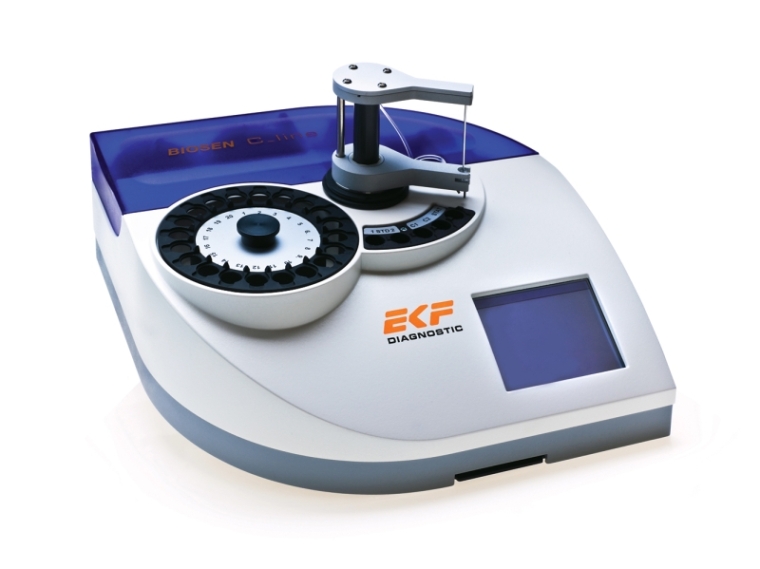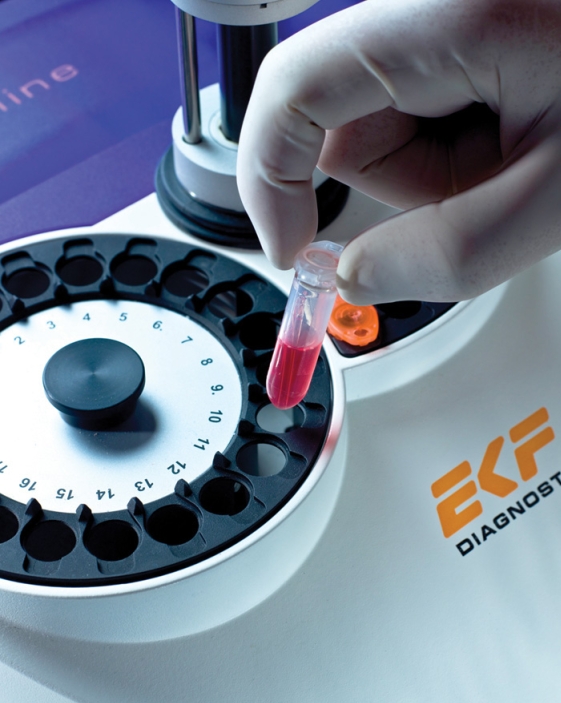Search by Catalog Number













VacuMed
4125 Market St #10
Ventura, CA 93003
(800) 235-3333
|
Lactate / Glucose Analyzer
Laboratory quality, rapid analysis
Solid state chip-based Lactate and/or Glucose Analyzer (No membrane)!Lactate and/or Glucose, depending on chip sensor used.
Technical Data Measuring principle: enzymatic, amperometric Electrode: Chip-Sensor(s) Range, Glucose: 0.5-50 mmol/l (9-900 mg/dl) Range, Lactate: 0.5-40 mmol/l (5-360 mg/dl) Un-precision: Cv less than 1.5%@12 mmol Stability / Drift: less than 3 % at 10 samples, referring to 12 mmol/l Lifetime of Glucose Sensor: 60 days or approx. 7500 tests; typical: 60 days Lifetime of Lactate Sensor: 50 days or approx. 6000 tests Sample material: blood, plasma or serum Sample volume: 20 ul (10 ul) Reaction container: 2,0 ml (1,5 ml) Calibration modes: By starting, periodic, TimeAccount Display / Keyboard: Graphical touch screen ( 320 x 240 dots) Memory: 500 results with position, date, time Languages: German, English, Spanish, French, Portuguese, Russian, Polish, Czech Other languages on request Printer: Parallel- Interface, RS 232 C (V.24) EDP: RS 232 C (V.24) Interface Ambient temperature: +15 to +35 degC Humidity: 20 - 85 % Mains power: 100 - 250 VAC / 50 - 60 Hz Power consumption: Approx. 30 VA Size (LxWxH): 280 x 280 x 95 mm Weight: approx. 3 - 5 kg See also "Assessment of blood lactate: practical evaluation of the Biosen 5030 lactate analyzer" Davidson et al, Medicine & Science in Sports & Exercise. For more demanding sample throughput models are available with a sample tray that holds 63 samples.
The Biosen lactate analyzers have received all European approvals but have not been submitted for US FDA approval, which means in the US they can only be sold for teaching, laboratory and research applications, not for clinical use.
|
